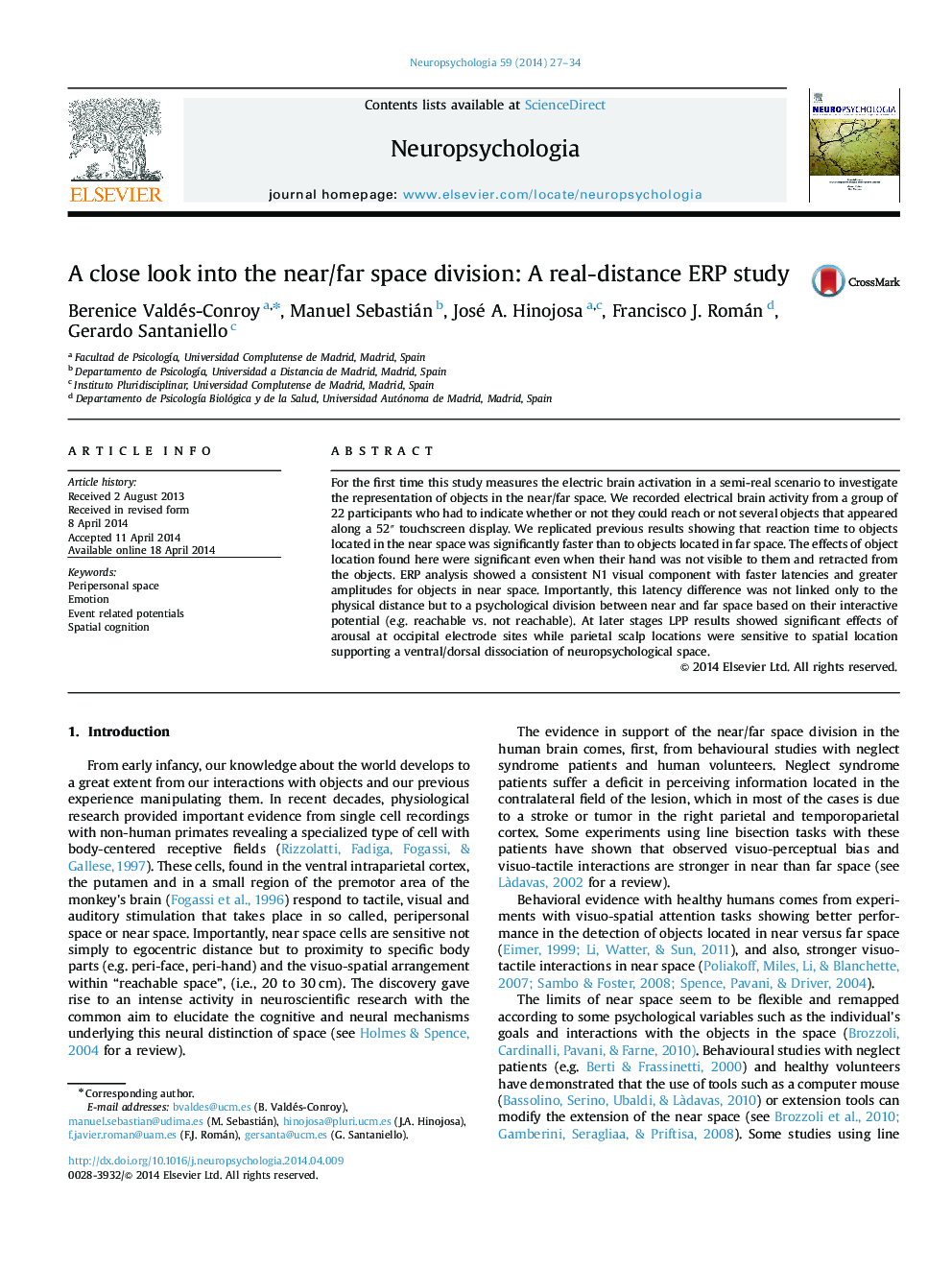| Article ID | Journal | Published Year | Pages | File Type |
|---|---|---|---|---|
| 944788 | Neuropsychologia | 2014 | 8 Pages |
•We measured event related potentials in a real-distance estimation experiment.•Stimuli had positive negative or neutral affective valence.•We replicated previous behavioural results of faster RT for objects in near space.•N1 and the LPP results provide new insights about emotion in spatial cognition.
For the first time this study measures the electric brain activation in a semi-real scenario to investigate the representation of objects in the near/far space. We recorded electrical brain activity from a group of 22 participants who had to indicate whether or not they could reach or not several objects that appeared along a 52″ touchscreen display. We replicated previous results showing that reaction time to objects located in the near space was significantly faster than to objects located in far space. The effects of object location found here were significant even when their hand was not visible to them and retracted from the objects. ERP analysis showed a consistent N1 visual component with faster latencies and greater amplitudes for objects in near space. Importantly, this latency difference was not linked only to the physical distance but to a psychological division between near and far space based on their interactive potential (e.g. reachable vs. not reachable). At later stages LPP results showed significant effects of arousal at occipital electrode sites while parietal scalp locations were sensitive to spatial location supporting a ventral/dorsal dissociation of neuropsychological space.
Graphical abstractFigure optionsDownload full-size imageDownload high-quality image (128 K)Download as PowerPoint slide
